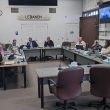By Skyler Bascom
During Gov. Kate Brown’s opening remarks on Oct. 30, when she announced new metrics for opening up schools for in-person instruction, the governor said: “This is a time for us to take a deep breath and reflect on the steps each of us need to take to keep our families safe and our communities safe.”
I took her advice. Writing this column is my first step in keeping my family and community safe. The safety I am most concerned about goes beyond mere physical safety she is referring to. It is a holistic approach to safety, including psychological, social, and emotional safety.
I call this my “north star” step. Let me explain.
During the press conference state schools Director Colt Gill said our state’s “north star” is having students back to in-person instruction.
Omitted from his definition was any mention of children accessing education without masks and freely interacting with their peers.
Just the opposite was stated.
Both Director Gill and Kate Brown talked about penalties that school districts can face if they do not adhere to social distancing guidelines.
The numerous times an OSHA hotline number was given out for reporting schools who are not compliant made it clear that our leading governing officials see the “north star” as having students back in schools, covered with masks, distanced from their friends and classmates.
I disagree with this north star goal and I propose an alternative one that takes into consideration the social, emotional, psychological, and spiritual wellbeing of our students.
If I were to create a north star goal it would be to have children back in schools, creatively exploring their birthright to learn, play, and socialize in freedom and truth. This is a more robust north star than the one stated last week, as it takes a comprehensive view of child safety.
Covering 50 percent of a child’s face and preventing them from playfully interacting with their fellow classmates does not place student safety at the center of Brown and Gill’s north star.
Sure, it arguably keeps the students physically safe (although there have been plenty of journalists and scientists who challenge the effectiveness of masking children as a COVID-19 safety measure).
But what about the other elements of a child’s safety? Is it in our children’s best social interest to avoid physical contact with other students?
Leading child psychologists like Dr. Violet Oaklander, Ph.D, argue that children learn essential social skills through physical interaction with peers.
Social bonding norms such as handshakes, hugs, and high fives will be lost on an entire generation.
Is it in our children’s best interest to cover 50% of facial expressions?
Dr. Paul Ekman’s research into the human facial structure concludes that expressions such as anger, surprise, fear, disgust, contempt, happiness, and sadness are sometimes undetectable to the naked eye.
The difference between understanding these facial cues oftentimes boils down to the contraction of only one or two muscles. Humans must learn to recognize these subtle differences in order to safely socialize with each other.
Remove 50% of the perceivable data by covering the lower 50% of a child’s face and most people cannot tell the difference between anger, surprise, fear, disgust, contempt, happiness, and sadness.
You may counter, “Oh Skyler, this doesn’t place our children in harm’s way.”
Malcom Gladwell, a critically acclaimed researcher, social commentator and author, wrote two books called “Blink” and “Talking with Strangers,” in which he details high-profile rape cases, police shooting cases, and even the misjudgement of Adolf Hitler’s intentions by British Prime Minister Neville Chamberlain, which could have saved millions of lives.
Facial recognition matters. Developing the skills to interpret facial expressions matter. Sending our children into a school where 50% of their face-reading abilities are eliminated will lead to major safety concerns later down the road.
I don’t want a future where my children are unable to identify the difference between a stranger expressing contempt and a stranger expressing friendly curiosity. A way to protect them in the future is to unmask our children at school so they can start learning how to read facial expressions now.
I don’t want a “north star” that disables my sons’ and daughter’s ability to detect friend from foe.
What good is physical safety now when the consequences of not being able to accurately read facial expressions can lead to physical, emotional, social, and spiritual damage later down the road?
So what is my solution? I propose we keep our eyes on the true north star of holistic education. This true north star envisions a future where children can freely learn, explore, and develop the necessary skills now so they can be holistically safe in the future: socially, emotionally, psychologically, and spiritually.
By reducing our children’s north star to only include physical safety sets up an entire generation to experience other harms mentioned above. Physical safety is important. It should be a part of the north star vision, but not the entire picture.
– Skyler Bascom is a local school counselor. He writes occasionally for Lebanon Local.




